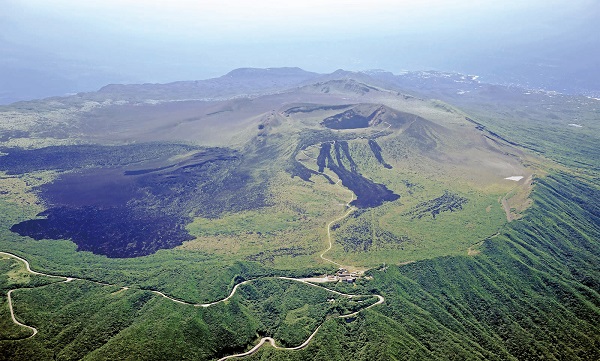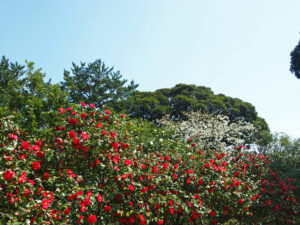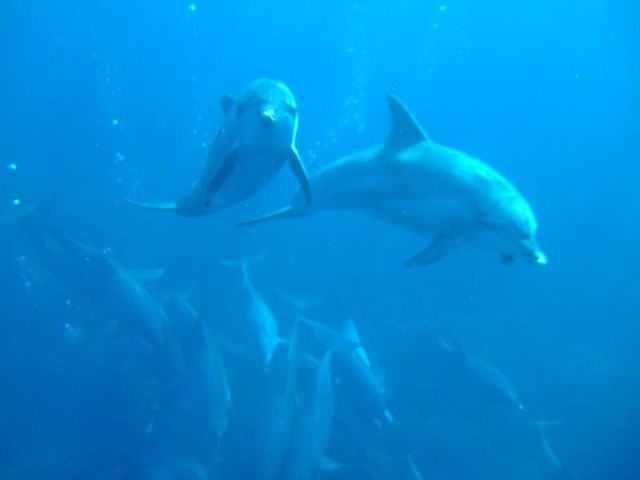Izu Islands
Where are the Izu Islands?
The Izu Islands are a group of volcanic islands in the Pacific Ocean. They are located to the south east of the Izu Peninsula on Honshu, Japan’s largest island.


The Izu Islands are governed as part of the Tokyo metropolis despite Oshima, the island closest to Honshu, being 108km (67 miles) away from Tokyo. Aogashima is the most distant island being 354km (220 miles) from Tokyo.
The Ogasawara Islands, Chichijima and Hahajima, are a separate chain of Pacific Islands that are also part of Tokyo and often considered alongside the Izu Islands with regards to tourism and travel.
What are the Izu Islands known for?
The island of Oshima, also called Izu Oshima, is known for its active volcano Mount Mihara and being home to a world renowned camellia garden.


The islands of Nii-jima, Miyake-jima, and Hachijo-jima are known for being used by the Shogunate as places of exile and penal colonies during the Edo period.


Hachijo-jima is known for its hot springs, the endangered Hachijo language which is descended from an older form of Japanese and for local cuisine such as shimazushi (sushi with mustard instead of wasabi).
The famous film Battle Royale was filmed on Hachijo-kojima, a small island close to Hachijo-jima.

Nii-jima and Kozu-shima are famous for their beaches while Mikura-jima is famous for dolphin watching.
Where should I visit in the Izu Islands?
Oshima is the largest and most populated of the Izu Islands. The island offers several hiking trails on Mount Mihara and the Sunset Palm Line bicycle trail along the coast which features views of Mount Fuji on a clear day.


Nii-jima offers visitors a large number of beaches and excellent surfing conditions.


Visitors primarily head to Mikura-jima to take part in dolphin watching. Lucky visitors may even be able to snorkel near wild dolphins.


Hachijo-jima is home to Uramigataki, a free open air hot spring (onsen) and waterfall that attracts many visitors.
Due to the small number of towns across the islands, the majority of the islands are suitable for hiking and walking, both inland and along the coast.
They are also a great place to indulge in water sports such as surfing, swimming and scuba diving, with the exception of Mikura-jima where scuba diving is not allowed.
When is the best time to visit the Izu Islands?
The Izu Islands have a subtropical climate, characterized by warm temperatures and significant rainfall throughout the year.
Summer (June – August) is hot and humid with temperatures in the region of 30°C (86°F).
Autumn (September – November) brings mild temperatures and less rain as it transitions into winter.

The rainy season runs between June and October and the islands may be susceptible to typhoons during this period.
Winter (December – February) is often mild and dry with average temperatures around 12-13°C (54-55°F).
Spring (March – May) sees temperatures start to rise with occasion rainfall increasing as summer and the rainy season arrives.
All Events in the Izu Islands
[MEC id=”9351″]Tours and Activities in the Izu Islands
None found.
Where should I stay in the Izu Islands?
As a chain of islands, visitors are recommended to determine their itinerary in advance and check the availability of inter-island transport during their visit before selecting accommodation.
The Izu Islands do not contain the same breadth of budget options as mainland Japan with none of the national budget hotels chains having a presence.
Visitors are recommended to look at the range of independent ryokans, resorts and hotels in the islands such as Hotel Kailani or Mashio Hotel Resort on Oshima and Lido Park Resort or Mantenbo on Hachijo-jima.




How do I get to the Izu Islands?
Visitors to the islands can either fly or take a ferry from mainland Japan. Most flights and ferries to the island originate from Tokyo.
ANA offers flights from Tokyo Haneda Airport to Oshima and Hachijojima several times per day.

Visitors seeking flights to other islands can use New Central Air Services which operates semi-regular flights from Chofu Airfield in Tokyo to the islands of Niijima, Oshima, Miyakejima and Kozushima.
Onward travel within the islands can be completed by helicopter flights operated by Tokyo Ai-Land Shuttle (Toho Air) which provides connections from Hachijojima to the islands of Aogashima, Mikurajima, Oshima and Toshima.

Visitors can also access the islands via ferries operated by Tokai Kisen from Takeshiba Terminal in Tokyo.
The terminal is adjacent to Takeshiba station on the Yurikamome line and close to Daimon station (Asakusa and Oedo lines) and Hammamatsucho station (Yamanote line and Tokyo Monorail).

Ferries from Tokyo follow one of two routes:
- Tokyo – Oshima – Toshima – Nii-jima – Shikine-jima – Kozushima.
- Tokyo – Miyake-jima – Mikura-jima – Hachijo-jima.
Ferries to Oshima also operate from Atami in Shizuoka Prefecture.
Most ferry services are high speed jetfoils that take under 2 hours to travel from Tokyo or 45 minutes from Shizuoka.
Some overnight ferries operate between Tokyo and Oshima which take 6-8 hours depending on the weather/time of year.
This post may contain affiliate links, and Essential Japan may earn a commission if you purchase through them.

